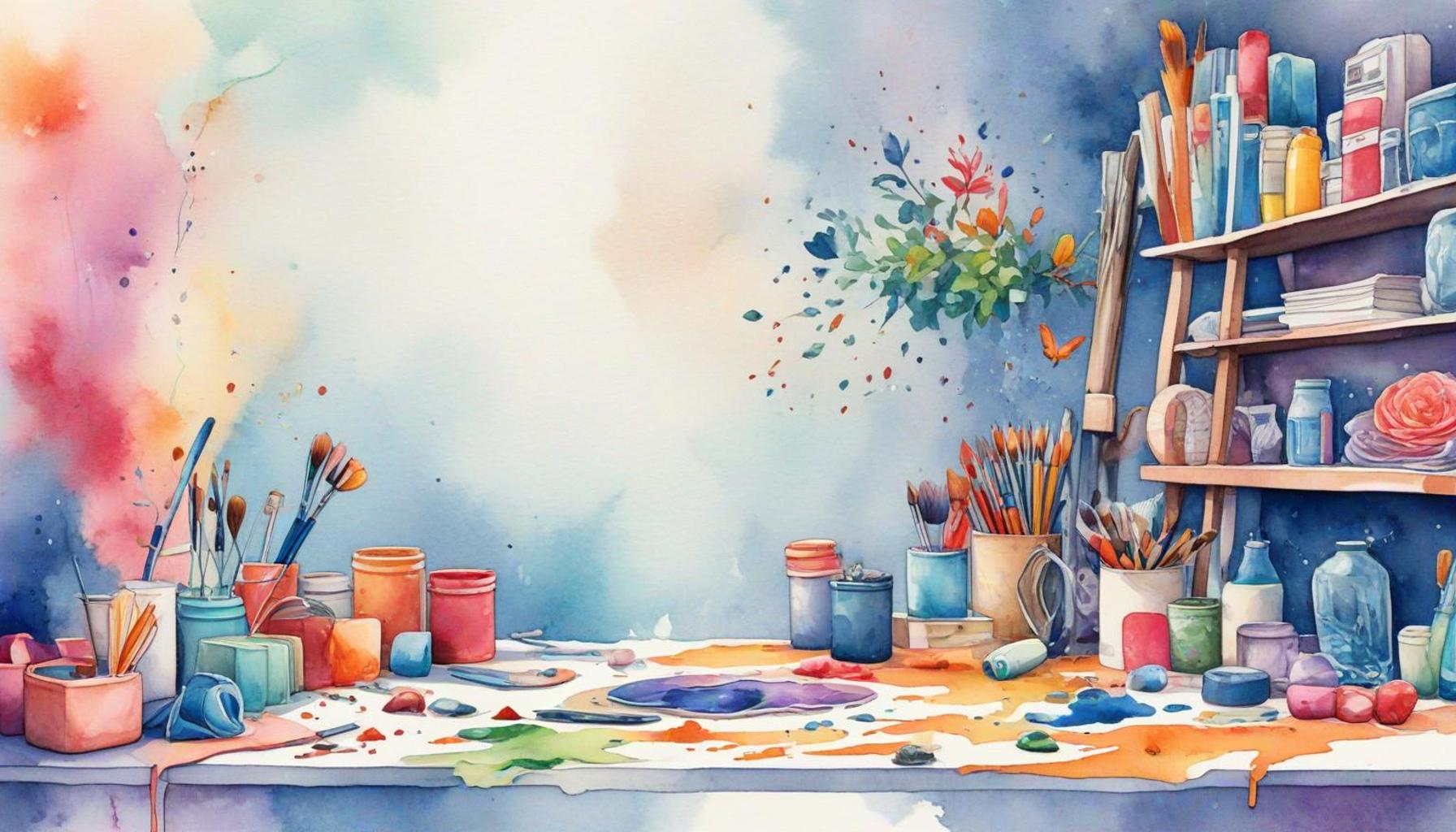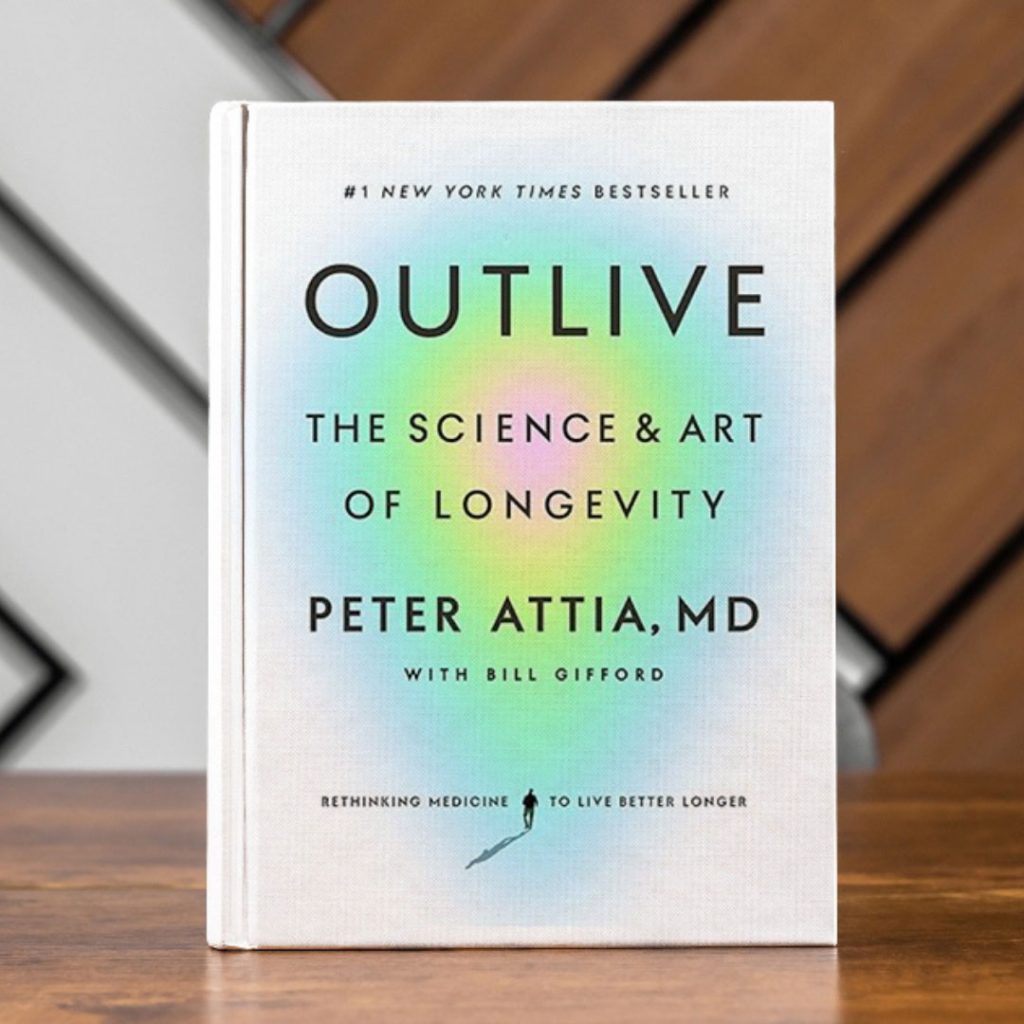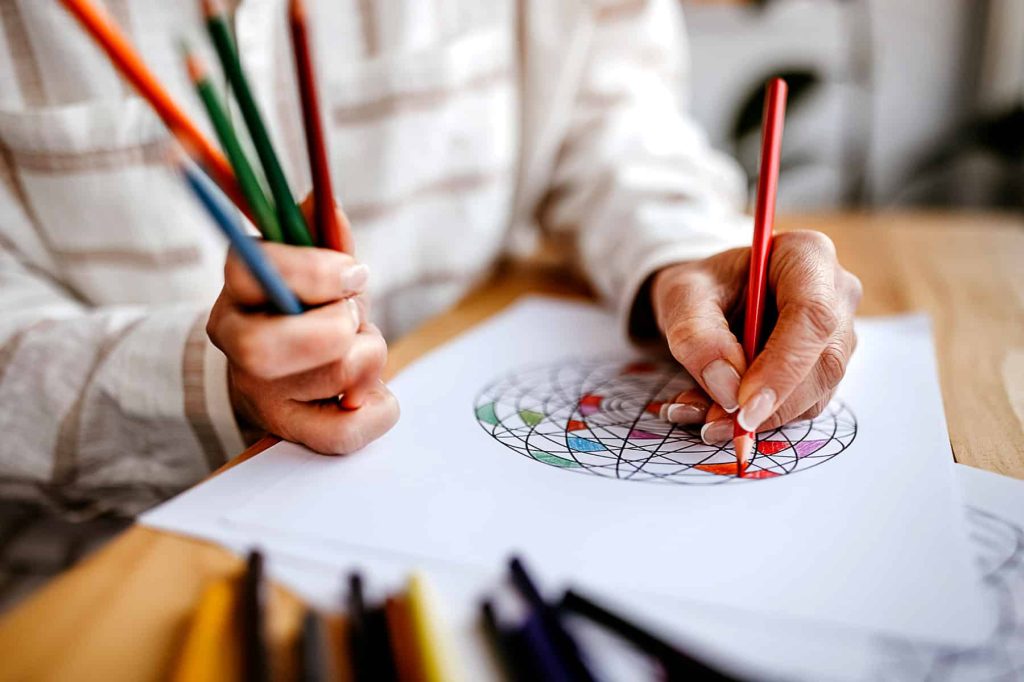The Art of Dematerialization: Reducing Physical Items to Maximize Space and Mental Clarity

Unleashing the Power of Less
In an age where consumerism seems to reign, the concept of dematerialization offers a refreshing perspective. By intentionally reducing physical items, individuals can discover a path to greater mental clarity and improved spatial organization. This intentional simplification not only transforms homes but also uplifts minds.
Understanding Dematerialization
Dematerialization is more than just decluttering; it encapsulates a lifestyle choice characterized by:
- Simplification of everyday life
- Minimalist aesthetics promoting tranquility
- Environmental awareness and sustainability measures
The essence of dematerialization lies in consciously choosing to prioritize experiences over material possessions. For instance, instead of buying the latest gadget or fashion trend, individuals may invest in travel or learning new skills, which often provide richer, more fulfilling experiences. This shift can lead to reduced financial stress and a more meaningful existence.
The Impact of a Clutter-Free Environment
Research points to a significant correlation between clutter and stress levels. Clutter can create a visual distraction that overwhelms the mind and hinders decision-making, establishing a chaotic environment that breeds anxiety. By eliminating unnecessary possessions, you can:
- Enhance focus and productivity by creating an organized workspace, which has been shown to improve efficiency and effectiveness.
- Increase creativity through open spaces; artists and writers often find inspiration in minimalism, where fewer physical items can lead to clearer thoughts.
- Foster a sense of peace and well-being, as a tidy environment contributes to better mental health by reducing feelings of guilt or disarray.
For example, a busy professional may find that a streamlined home office allows for better concentration on tasks, leading to improved performance on projects. Families can create a more harmonious living environment by involving kids in the process of decluttering, teaching them the values of responsibility and mindfulness.


Whether you’re a busy professional, a family-oriented individual, or a student, learning the art of dematerialization can be a game-changer. Not only does it cultivate a serene space, but it also invites personal growth, fostering a deeper connection to what truly matters. Dive deeper into this transformative journey and unlock the secrets to maximizing your space and enriching your mental landscape. Explore local workshops on minimalism or books that delve into this lifestyle, and consider joining communities focused on sustainable living to further your understanding and practice of dematerialization.
DISCOVER MORE: Click here to learn about minimalism and productivity
The Process of Decluttering: Steps Towards Dematerialization
Embracing the art of dematerialization begins with the process of decluttering. This journey involves more than merely tossing out old belongings; it requires a thoughtful evaluation of what brings value to your life. Understanding the significance of each item can lead to profound changes in both your environment and mindset. Here are practical steps to initiate your decluttering journey:
- Set Clear Goals: Begin by establishing what you want to achieve through dematerialization. Whether it’s creating more space, reducing stress, or fostering a minimalist lifestyle, having specific objectives will guide your process.
- Start Small: Tackling an entire house can be overwhelming. Focus on one area at a time—starting with a single drawer or room allows for manageable progress.
- Question Each Item: As you go through your belongings, ask yourself if each item serves a purpose or brings you joy. This question, popularized by decluttering expert Marie Kondo, can help you identify what is truly valuable.
- Sort and Categorize: Create distinct categories such as keep, donate, recycle, or discard. This systematic approach simplifies decision-making and provides a clear plan for each item.
- Make It a Habit: Dematerialization is not a one-time endeavor but a continuous practice. Develop routines that encourage regular decluttering, such as seasonal reviews or monthly check-ins.
The benefits of this process can be transformative. As you purge unnecessary items, you enhance your physical space, allowing for greater functionality and freedom. For instance, a decluttered kitchen can lead to a more enjoyable cooking experience, while a tidy bedroom promotes restful sleep.
The Psychological Benefits of Dematerialization
The positive impact of a clutter-free environment extends to mental well-being. Research indicates that clutter contributes to stress and anxiety, distracting individuals from focusing on priorities and creating an overwhelming sense of chaos. As one clears physical items, they often experience:
- Reduced Stress Levels: A streamlined space reduces the time spent searching for things and decreases the mental burden of managing excessive belongings.
- Increased Clarity: With fewer distractions, thoughts can flow more freely. This clarity fosters creativity and problem-solving, allowing individuals to engage more fully with their work or hobbies.
- Improved Well-being: A clean, organized environment can promote a sense of accomplishment and boost self-esteem, contributing to a more positive outlook on life.
For many, the process of dematerialization not only reshapes their physical surroundings but also encourages a deeper connection to their values and priorities. As individuals consider the experience-oriented pathway of life over material possessions, they pave the way for heightened satisfaction and fulfillment. By committing to the principles of dematerialization, individuals can embark on a journey towards a more meaningful and intentional existence.
| Advantages | Benefits of Dematerialization |
|---|---|
| Enhanced Mental Clarity | By reducing clutter, individuals often experience improved focus and cognitive functioning. |
| Increased Creativity | A decluttered environment fosters creativity and allows for new ideas to flourish. |
| More Space | Dematerialization helps maximize physical space, making living areas more inviting. |
| Emotional Well-being | Reducing unnecessary items can alleviate emotional burdens tied to material possessions. |
Engaging in the practice of dematerialization can significantly alter one’s lifestyle and mental state. As physical items are reduced, the benefits range from heightened emotional well-being to an increase in personal space, underscoring the principle that less really can be more. The experience of walking into a serene, uncluttered room can evoke tranquility, leading to a naturally peaceful psychological state. Furthermore, research indicates that individuals who embrace minimalism often report higher levels of satisfaction and less anxiety. Such transformation in one’s environment not only opens up space but also invites fresh perspectives and sparks creativity. This redefined lifestyle can serve as an inspiring model for others trying to navigate the complexities of modern living amidst ever-mounting pressures of consumerism. By choosing to let go of excess, we pave the way for a fulfilling existence where mental clarity springs from simplicity.
DISCOVER MORE: Click here to learn about the benefits of minimalism on productivity
Transforming Perspectives: A New Approach to Ownership
As we delve deeper into the art of dematerialization, it becomes evident that this journey isn’t solely about reducing physical items; it’s a profound shift in how we perceive ownership and value. In a society that often equates success with the accumulation of possessions, dematerialization challenges us to think critically about what we truly need. By embracing a mindset of intentionality, individuals can significantly enhance their quality of life. Here are several aspects to consider:
Rethinking Value in a Consumer Society
Consumer culture bombards us with messages advocating for constant acquisition, often leading to a cycle of dissatisfaction. However, dematerialization encourages individuals to reassess what truly brings joy and value. For example, a recent survey indicated that over 70% of Americans feel overwhelmed by their possessions, suggesting a collective need for change. By focusing on experiences rather than material goods, individuals can derive greater satisfaction from their environment and lifestyle.
- Experience over Possession: Consider the joy of travel or the memories created with loved ones—these experiences often lead to deeper fulfillment than material items can provide. Emphasizing experiences can reduce the impulse to acquire items that do not contribute substantially to our happiness.
- Quality over Quantity: Investing in well-made, enduring items rather than a multitude of cheap products supports a more sustainable lifestyle. This shift not only minimizes clutter but also fosters a greater appreciation for the belongings we choose to keep.
- Mindful Consumption: Practicing mindfulness in consumption means evaluating needs versus wants. Before making a purchase, ask whether an item truly aligns with your values or will simply contribute to clutter.
Digital Dematerialization: The Virtual Space Revolution
Another avenue of dematerialization lies in the digital realm. As technology continues to advance, shifting physical items into digital formats allows individuals to free up both physical space and mental bandwidth. The rise of digital solutions such as e-books, online streaming services, and cloud storage is a testament to this transformation. Here are examples of how digital dematerialization is reshaping our world:
- E-books and Audiobooks: With the convenience of carrying entire libraries on electronic devices, readers can access vast amounts of literature without the bulk of physical books.
- Streaming Services: The transition from owning DVDs and CDs to subscribing to platforms like Netflix and Spotify eliminates the need for dedicated entertainment spaces, allowing for more functionality in homes.
- Cloud Storage: By storing important documents and photos online, individuals can reduce the need for filing cabinets and boxes, creating a cleaner and more organized home environment.
Integrating digital solutions not only supports physical dematerialization but also enhances accessibility. With the ability to access content from various devices, individuals can streamline their lives, reducing distractions and fostering focus. As anyone who has undergone the process of digitizing their life can attest, this can lead to a newfound sense of freedom—one that enhances both space and mental clarity.
Challenges on the Path to Dematerialization
Despite its numerous benefits, the journey of dematerialization may present challenges. Emotional attachments to items can complicate the process. Overcoming this requires patience and self-reflection. Understanding that memories reside in experiences rather than physical objects can empower individuals to let go of possessions without fear. Additionally, establishing a support system—such as friends or community groups dedicated to minimalism—can provide motivation and encouragement during this transformational journey.
By embracing these principles and confronting personal challenges, individuals can redefine their relationship with ownership, paving the way for a minimalist lifestyle that prioritizes mental clarity, freedom, and sustainable living. The art of dematerialization, therefore, is not merely an exercise in removal; it is a path to a more meaningful existence, deeply rooted in the appreciation of life’s transient yet beautiful moments.
DIVE DEEPER: Click here to discover the secrets of decluttering
Embracing a Minimalist Future
In conclusion, the art of dematerialization offers a transformative pathway to redefining our relationship with physical items and mental clarity. As we have explored, this journey encourages not only the reduction of clutter but also the enhancement of our overall well-being and focus. By shifting our priorities from possessions to experiences, we can cultivate a meaningful existence that values quality over quantity. The understanding that true fulfillment stems from moments shared with loved ones, rather than material acquisitions, is a revelation that many are beginning to recognize.
The integration of digital solutions further exemplifies the benefits of dematerialization, creating an environment that is not just organized but also more functional. As we transition into an increasingly digital age, embracing this shift can lead to liberated spaces and tranquil minds. Yet, it’s important to address the emotional challenges that can arise during this process. Acknowledging these feelings while practicing mindfulness and seeking support can make the journey more manageable.
Ultimately, dematerialization is not just about rejecting excess; it’s about opening ourselves up to the beauty of simplicity. As we cultivate a lifestyle centered on mindfulness and intentional living, we can pave the way for a more purposeful and clear-minded future. So, let us embark on this journey, not merely as a trend but as a commitment to enhancing our lives and cherishing what truly matters.
Related posts:
Maximize Small Spaces Innovative Storage Solutions for Minimalist Living
Living Spaces: How Minimalism and Optimization Can Create Attractive Environments for Socialization
Zen Spaces: How Optimization and Minimalism Can Enhance Your Emotional Well-Being
Maximizing Small Spaces: Minimalist Organization Strategies for Compact Apartments
Boost Mindfulness Productivity Unveiling Decluttering Psychology
Simplicity in the Kitchen: Minimalism Strategies to Optimize Storage and Accessibility

Linda Carter is a writer and organization expert specializing in minimalism and personal organization. With extensive experience helping individuals create clutter-free, functional spaces and adopt mindful habits, Linda shares her knowledge on our platform. Her goal is to empower readers with practical advice and strategies to simplify their lives, stay organized, and achieve a sense of calm and balance in their daily routines.